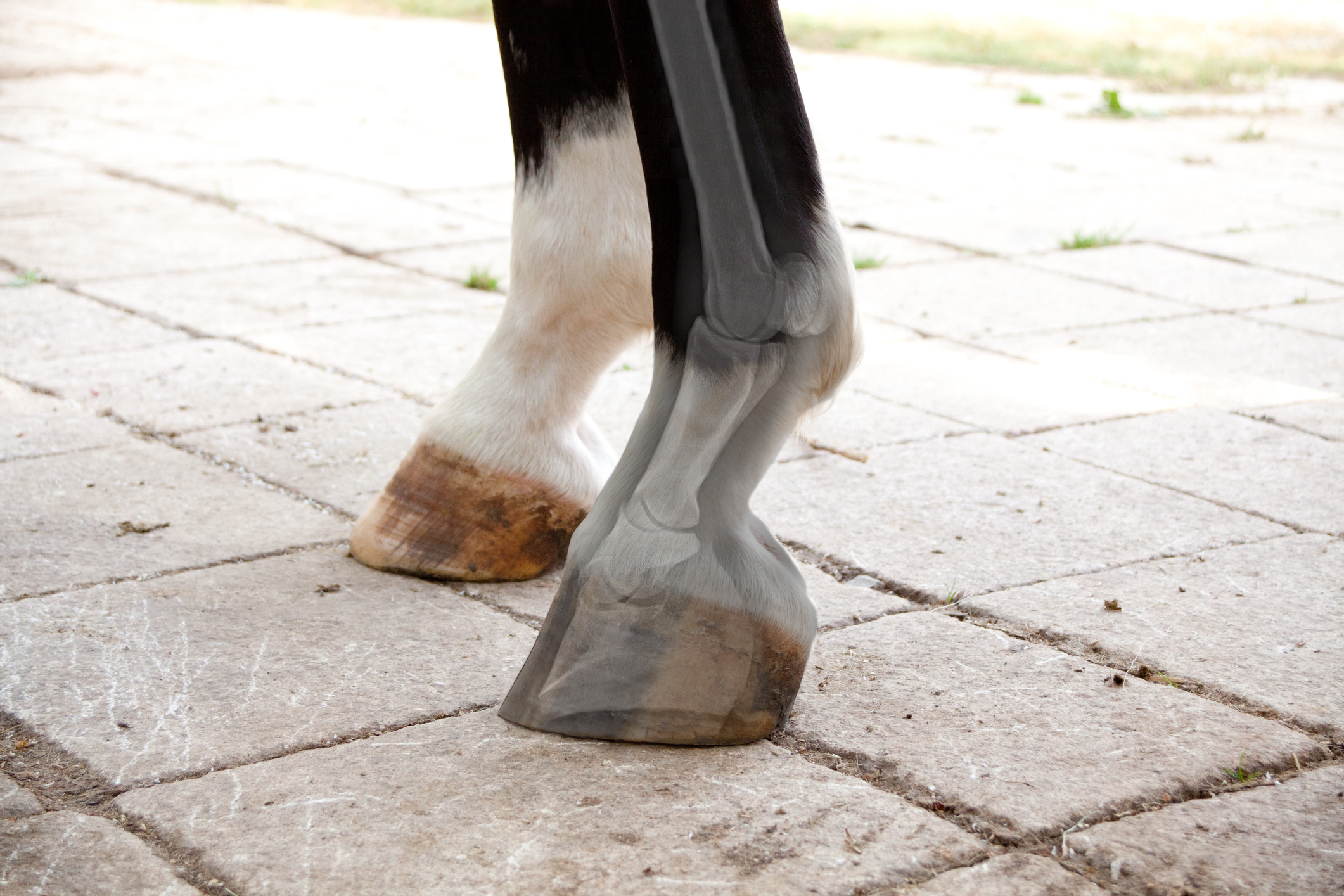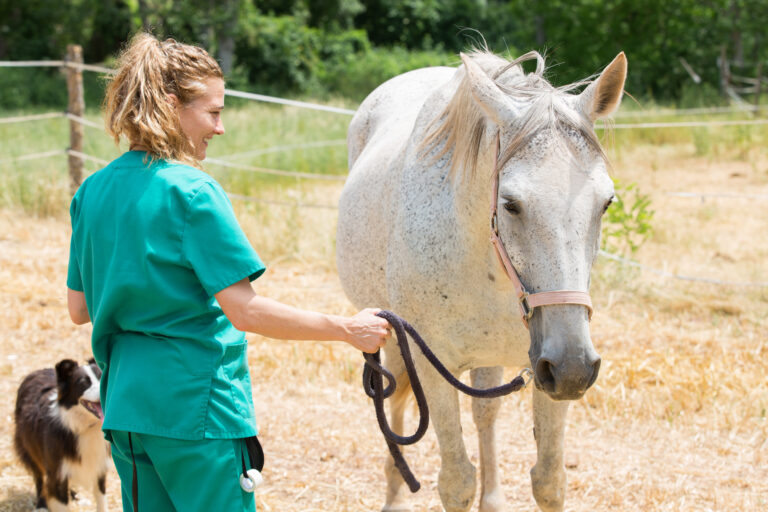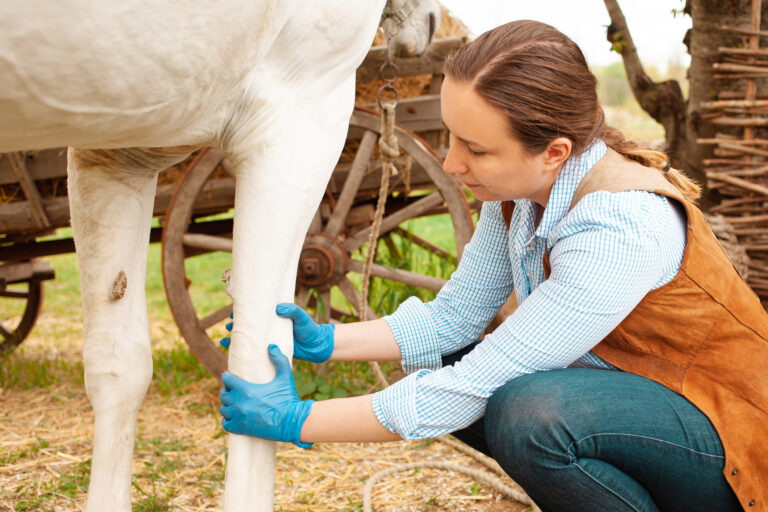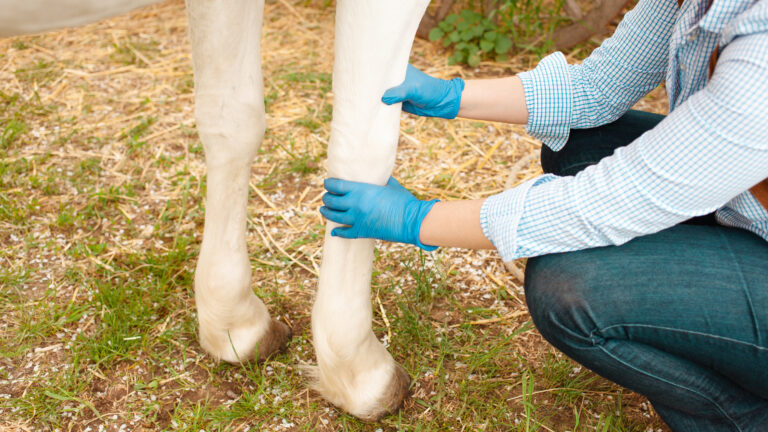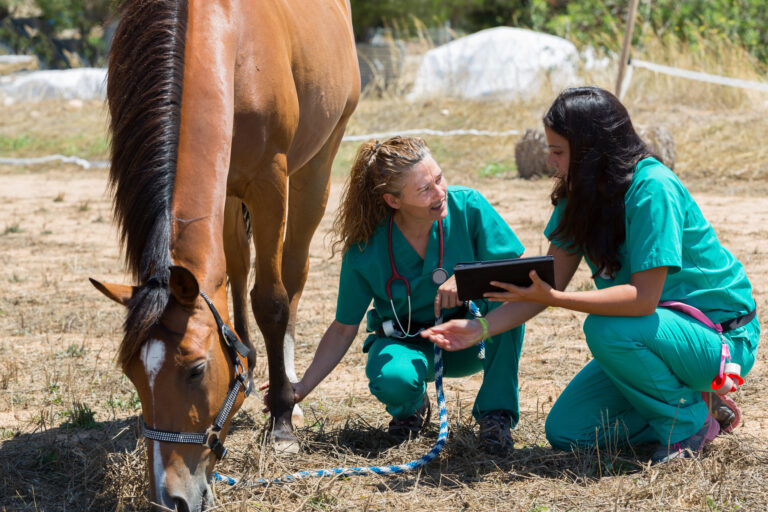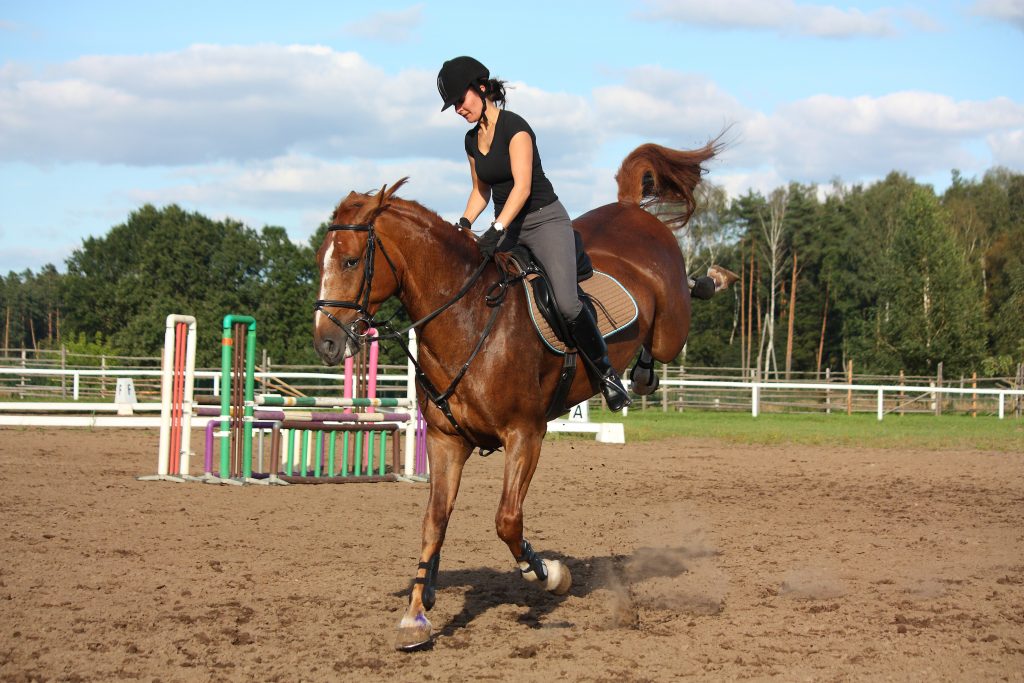Understanding Horse Lameness: Causes, Symptoms, and Treatment for Effective Care and Recovery
Horse lameness is a common problem that affects your horse’s ability to move comfortably. It can result from many causes, including injury, wear and tear, or underlying health concerns. Understanding the causes, recognising the symptoms, and knowing the right steps to take can help you manage and treat lameness effectively.
When your horse shows signs of discomfort or uneven movement, it’s important to identify lameness early. Symptoms can include limping, stiffness, or reluctance to move. Proper diagnosis often requires a careful examination and sometimes advanced techniques to find the exact issue affecting your horse’s legs or hooves.
Treatment varies depending on the cause and severity. This might involve rest, medication, special shoes, or veterinary care. Knowing when to seek professional help and how to care for your horse during recovery can make a big difference in their health and performance. For detailed information, you can explore resources like Adams and Stashak’s Lameness in Horses.
Key Takeaways
- Recognise early signs of lameness to protect your horse’s health.
- Accurate diagnosis is essential for effective treatment.
- Proper care and veterinary advice improve recovery chances.
What Is Horse Lameness?
Horse lameness affects your horse’s ability to move normally. It usually means there is pain or damage in the musculoskeletal system. Understanding the causes, impact, and common types of lameness helps you spot issues early and manage them effectively.
Defining Lameness in Horses
Lameness is any abnormality in your horse’s gait caused by pain or mechanical problems. It can affect one or more limbs. You might notice uneven movement, head nodding, or reluctance to bear weight.
Lameness often signals problems in the musculoskeletal system, including bones, joints, tendons, and muscles. It can result from injury, inflammation, or disease. Identifying lameness requires careful observation of your horse’s movement and posture.
Because of the complexity of equine anatomy, diagnosing lameness involves detailed examination, sometimes using imaging tools. Early detection is key to preventing more serious damage.
Impact on Equine Health and Performance
Lameness reduces your horse’s comfort and ability to work. Even mild lameness can cause changes in movement that lead to further injury. If untreated, it may worsen or become chronic.
Performance horses are particularly affected, as lameness can limit speed, strength, and stamina. Your horse might show reluctance to perform usual tasks or uneven gait patterns during exercise.
Lameness also affects mental well-being. Chronic pain can cause behavioural changes like irritability or depression. Monitoring your horse closely can help you catch subtle signs before they become serious.
Common Lameness Conditions
Several conditions frequently cause lameness:
- Tendon injuries: Strains or tears in tendons often from overwork or trauma.
- Joint problems: Arthritis or synovitis leads to swelling and pain.
- Hoof issues: Abscesses, laminitis, or cracks affect hoof function.
- Bone fractures: Resulting from accidents or repeated stress.
Here is a simple table to summarise:
| Condition | Common Causes | Signs to Watch For |
|---|---|---|
| Tendon injuries | Overuse, trauma | Swelling, heat, tenderness |
| Joint problems | Wear, infection | Joint swelling, stiffness, pain |
| Hoof issues | Poor care, injury | Lameness, heat in hoof, sensitivity |
| Bone fractures | Trauma, stress fractures | Sudden severe lameness, swelling |
Knowing these helps you spot when your horse needs veterinary care. Early treatment improves recovery chances and reduces lasting damage.
Learn more about diagnosing and managing lameness from detailed guides like Adams and Stashak’s lameness in horses.
Causes of Lameness
You should understand the main reasons why a horse becomes lame. Problems often start in the hoof, tendons, ligaments, or joints. Some conditions affect specific parts and cause noticeable pain or stiffness. Being aware of these can help you identify and manage lameness better.
Hoof-Related Issues
Your horse’s hoof is a complex structure that supports its entire body weight. Common problems include abscesses, which are pockets of infection causing sudden, severe lameness. You might see swelling or heat around the hoof.
Laminitis is a serious condition where the tissues inside the hoof become inflamed. This causes intense pain and can lead to founder, where the coffin bone shifts or rotates. Early signs include reluctance to move and shifting weight.
Routine hoof care and monitoring for cracks or bruises can prevent many hoof problems. Prompt treatment is essential if you notice signs of pain or inflammation.
Tendon and Ligament Injuries
Tendons and ligaments connect muscles to bones and provide support to joints. Injuries here often happen from sudden strain, overwork, or poor footing. You might see swelling or heat along the lower leg.
Tendonitis is a common injury causing inflammation and pain in the tendons. Ligament injuries can also cause instability in a joint. A horse with these issues may show lameness that worsens with exercise.
Proper warm-up, rest, and sometimes medical treatment like anti-inflammatories or controlled exercise are needed to heal these soft tissue injuries.
Joint Inflammation and Arthritis
Inflamed joints commonly cause lameness, especially in older horses or those with repeated stress. This includes arthritis, where joint cartilage wears away, leading to pain and stiffness.
Symptoms include stiffness after rest, swelling around joints, and reduced range of motion. You might notice your horse moving more slowly or favouring one leg.
Treatment focuses on managing pain and slowing progression. This may involve joint injections, medication, or changes to exercise routines to reduce stress on affected joints.
Specific Lameness Conditions
Some lameness causes are more specialised, like stress fractures or bone chips in joints. These injuries create sharp, localised pain and can cause sudden lameness.
Other conditions include navicular disease, which affects the navicular bone and surrounding tissues inside the hoof. It causes chronic, often mild lameness that worsens over time.
Identifying specific causes usually requires veterinary examination and imaging like X-rays or ultrasound. Early diagnosis improves your horse’s chances of recovery.
You should keep these causes in mind to spot lameness early and seek appropriate care. For more detailed information, refer to Adams and Stashak’s lameness in horses.
Identifying Symptoms of Lameness
When a horse is lame, you will notice clear physical signs and changes in movement. These include altered ways of walking, uneven weight bearing, and reactions to touch or pressure. Paying attention to these details helps you detect lameness early and take action.
Signs of Lameness in Horses
You can spot lameness by watching how your horse balances and holds its legs. Look for uneven weight distribution or reluctance to put weight on a limb. Swelling, heat, or a strong digital pulse in the affected leg are also common signs.
Check for tenderness when you palpate joints, tendons, or hooves. Your horse might also show stiffness or lag when moving after rest. These signs often indicate pain or injury and should not be ignored.
Abnormal Gait and Movement Patterns
Lameness often causes changes in your horse’s gait. You may see irregular strides, head bobbing, shortened steps, or a stiff leg. These abnormal gait patterns can help you pinpoint which limb is affected.
Watch your horse trot in a straight line and in circles. Lameness can show more clearly on certain surfaces or when turning. Detailed observation of these movement changes is vital for a proper assessment.
Pain Response and Behavioural Changes
Pain can make your horse irritable or unwilling to perform usual tasks. You might notice your horse resisting saddling, have a tense neck, or shift weight frequently. These behavioural changes often reflect discomfort linked to lameness.
A sensitive response to hoof testers or pressure on limbs also indicates pain. Recognising these signals allows you to address problems before they worsen and guides treatment decisions.
For more information, refer to detailed discussions on diagnosing lameness using clinical signs and gait analysis in Adams and Stashak’s lameness in horses.
Diagnosing Lameness in Horses
To diagnose lameness accurately, you rely on a detailed examination of the horse’s movement and physical condition. This process includes observing how the horse walks and trots, checking for pain or swelling, and using specific tools like hoof testers and digital pulse assessment to pinpoint the problem.
Lameness Examination
The lameness exam begins with watching your horse move in a straight line and in circles on different surfaces. This shows you if the lameness is worse on hard or soft ground and helps locate the limb or area affected. Look for uneven stride length, head nodding, or irregular weight-bearing, which indicate the lame leg.
You may use a scale from 0 to 5 to grade lameness, with 0 meaning no lameness and 5 meaning severe lameness. Careful observation during trotting is crucial because subtle lameness is easier to detect at a faster pace.
Physical Examination and Palpation
Next, you perform a physical check of the horse’s limbs and body. Palpation helps you feel for heat, swelling, or pain in joints, tendons, or muscles. Examine soft tissues carefully because injuries or inflammation often cause lameness.
Check the horse’s conformation and posture, which can reveal stress or compensatory changes due to pain. This physical examination supports your initial observations by confirming areas of tenderness or abnormality.
Hoof Testers and Digital Pulse Assessment
Hoof testers are used to apply pressure to specific areas of the hoof to find pain points. If the horse reacts strongly to pressure in one spot, this can show where the problem lies, such as bruising or a nail prick.
Digital pulse assessment involves feeling the pulse around the horse’s fetlock. A strong or bounding pulse in this area often signals inflammation or injury below the fetlock joint. Combining these tests gives you a clearer picture of hoof-related lameness and helps target treatment effectively.
For more detailed information on lameness examination techniques, you can refer to the book Adams and Stashak’s lameness in horses.
Advanced Diagnostic Techniques
To accurately pinpoint the source of lameness, you need specific diagnostic steps. These techniques help reveal which structures are injured or causing pain. You will rely on both physical tests and imaging to get a clear picture.
Joint and Nerve Blocks
Joint and nerve blocks, also called diagnostic analgesia, are essential tools in identifying the exact location of pain. You inject a local anaesthetic to temporarily numb specific joints or nerves. If the lameness improves after the block, it confirms the source lies in that area.
You must perform blocks carefully, starting from the lowest structures and moving upwards. This process helps narrow down the problem gradually. Joint blocks target areas like the fetlock, hock, and coffin joints, while nerve blocks desensitise larger sections of the limb.
Always monitor the horse after the block to note the improvement in gait. These blocks guide your treatment by confirming which parts need attention.
Flexion and Joint Flexion Tests
Flexion tests involve holding a joint or limb in a bent position for 30 to 60 seconds, then immediately trotting the horse away. You watch closely for increased lameness after this. The test stresses specific joints and soft tissues to reveal subtle pain.
Each joint is flexed individually—such as the carpus or hock—to isolate the problem. You must compare the results from both limbs and judge any changes in the horse’s movement.
These tests are quick to perform and provide valuable clues but are not definitive on their own. They should be combined with other diagnostics for best results.
Diagnostic Imaging Methods
Imaging tools give you a deeper look inside the horse’s limbs. X-rays (radiographs) show bone changes, fractures, or arthritis. You often take multiple views to get a full picture.
Ultrasound (ultrasonography) is best for examining soft tissues like tendons and ligaments. It reveals tears, swelling, or fibre damage.
More advanced tools include MRI and computed tomography (CT). MRI offers detailed images of both bone and soft tissue inside the foot and leg, useful for complex or subtle lameness. CT is helpful to view bone detail in 3D.
A bone scan or nuclear scintigraphy shows areas of increased bone activity and inflammation. This test is good when the lameness source is unclear.
Using these imaging methods together helps you identify the cause of lameness with greater accuracy.
Treatment Options for Lameness
Treating lameness involves different approaches based on the cause and severity. You will often use medication alongside therapies that help repair damaged tissues and reduce pain. Understanding your options helps you choose the best course for your horse’s recovery.
Medical and Pharmaceutical Interventions
You can start treatment with anti-inflammatory medication, such as non-steroidal anti-inflammatory drugs (NSAIDs). These reduce pain and swelling, allowing your horse to move more comfortably. Sometimes, corticosteroids may be injected directly into joints to lessen inflammation.
Another option is intra-articular therapies like IRAP (Interleukin-1 Receptor Antagonist Protein) and PRP (Platelet-Rich Plasma). IRAP controls joint inflammation by blocking harmful proteins, while PRP helps speed up healing by using growth factors from your horse’s own blood.
You should always follow a vet’s advice on dosing and duration. Overuse of medication can cause side effects, so monitoring your horse’s response is vital for safe treatment.
Regenerative Therapies and Shockwave Treatment
Regenerative therapies strengthen damaged tissues in a natural way. PRP and stem cell therapies improve healing by stimulating cell growth in tendons and ligaments. These treatments are useful when your horse has soft tissue injuries causing lameness.
Shockwave therapy uses sound waves to boost blood flow and reduce inflammation. It can encourage tissue repair, ease pain, and speed recovery. Shockwave treatment is non-invasive and often combined with other therapies.
Some owners also use acupuncture to target pain and muscle spasms. This can complement medical treatments, although it is best used under veterinary guidance.
For more details on diagnosis and management, see this page on Diagnosis and Management of Lameness in the Horse.
Ongoing Management and Prevention
To keep your horse healthy and sound, focus on daily care that supports the hoof, musculoskeletal system, and overall hydration. Consistent attention in these areas helps reduce the risk of lameness and supports early detection of problems.
Hoof Care and Regular Maintenance
Your horse’s hooves need regular trimming and cleaning. A farrier should check them every 6 to 8 weeks to prevent uneven wear and cracks. Proper hoof shape supports balance and reduces strain on joints and tendons.
Inspect hooves daily for stones, thrush, or bruising. Use a hoof pick to clear debris, especially in wet or muddy conditions. Shoes may be necessary for horses working on hard or rough surfaces.
If your horse shows signs of discomfort or uneven gait, consult your vet or farrier immediately. Well-maintained hooves form the foundation for soundness and reduce the chance of chronic problems.
Biomechanics and Musculoskeletal Support
Understanding your horse’s movement helps you spot early signs of strain or injury. Pay attention to symmetry in gait and posture during walking and trotting.
Provide regular, low-impact exercise to strengthen muscles and support joint health without causing fatigue or stress. Avoid sudden changes in workload that can increase injury risk.
Support your horse’s musculoskeletal system with balanced turnout and good footing. Uneven or slippery surfaces can contribute to slips or strains, which may cause lameness.
You can also benefit from professional assessments on your stable layout and exercise routines to reduce biomechanical stress.
Hydration and Nutrition
Proper hydration is vital for joint lubrication and overall health. Ensure your horse always has access to clean, fresh water. Monitor water intake, especially during hot weather or increased work.
Balanced nutrition supports hoof quality and musculoskeletal strength. Provide forage and concentrates that meet your horse’s energy and mineral needs.
Pay special attention to minerals like biotin, zinc, and copper, which are important for healthy hooves and tissue repair.
You may need to adjust diet and supplements based on your horse’s workload, age, and health status. Discuss with your vet or nutritionist for a plan tailored to your horse’s needs. For more on maintaining hoof health and lameness prevention, see the details in this horse management guide.
When to Consult a Veterinarian
Knowing when to get professional help is key to managing your horse’s lameness correctly. You need to watch for clear signs that need quick action and understand how working with equine experts can improve diagnosis and treatment.
Recognising Signs Requiring Immediate Attention
You should contact a vet immediately if your horse shows severe pain or sudden lameness. Signs include unwillingness to bear weight on a leg, swelling, heat in the limb, or open wounds. These symptoms might indicate fractures, infections, or serious soft tissue injuries.
If your horse has no improvement after 24 hours of rest or seems to get worse, you must seek veterinary help. Also, if lameness occurs after trauma or falls, don’t wait to consult a vet. Early intervention can prevent further damage.
Working With Equine Professionals
A thorough lameness investigation by a veterinarian is essential for accurate diagnosis and treatment planning. They use techniques such as physical examination, nerve blocks, and imaging (X-rays, ultrasound) to find the exact cause.
You should also collaborate with your farrier and trainer to address hoof balance and shoeing, which can affect lameness. Regular communication with these professionals helps in managing your horse’s condition more effectively and avoiding recurrence. Trusting expert advice ensures safer and faster recovery.
For detailed guidance, check lameness examination methods in veterinary literature like the Clinical veterinary advisor: the horse.
Frequently Asked Questions
Understanding the causes, symptoms, diagnosis, and treatments of horse lameness helps you take better care of your horse. You should also know how to manage exercise and when difficult decisions might be needed.
What are the primary causes of lameness in horses?
Lameness often comes from injury or strain to the legs or hooves. Common causes include soft tissue damage, joint problems, hoof infections, and fractures.
Arthritis and poor conformation can also contribute to lameness. Some causes might be due to uneven shoeing or sudden trauma.
How can one identify the various stages of horse lameness?
Early signs include subtle changes in gait or reluctance to move. You might notice uneven weight bearing or slight limping.
As lameness progresses, the horse may show obvious favouring of one leg, head nodding, or reduced performance. In severe cases, the horse could be lame while standing still.
What are the most effective treatments for a horse experiencing lameness?
Treatment depends on the cause. Rest and anti-inflammatory medication are common first steps.
Corrective shoeing, physical therapy, or surgery might be needed for more serious problems. Always follow a vet’s advice to get the best outcome.
Is euthanasia a necessary course of action for a severely lame horse?
Euthanasia is only considered when pain cannot be controlled or quality of life is very poor.
Your vet can help assess whether treatment options remain or if it is more humane to end suffering.
What methods are used to diagnose equine lameness?
Diagnosis starts with a detailed physical exam and observing the horse moving.
Advanced tools include nerve blocks, X-rays, ultrasound, and sometimes MRI to pinpoint the problem areas.
You can read more about diagnosis in this lameness examination guide.
How should one exercise a horse that is showing signs of lameness?
Avoid hard work while lameness is present. Light, controlled exercise may help depending on the injury.
Consult your vet before resuming regular exercise to prevent worsening the condition.

